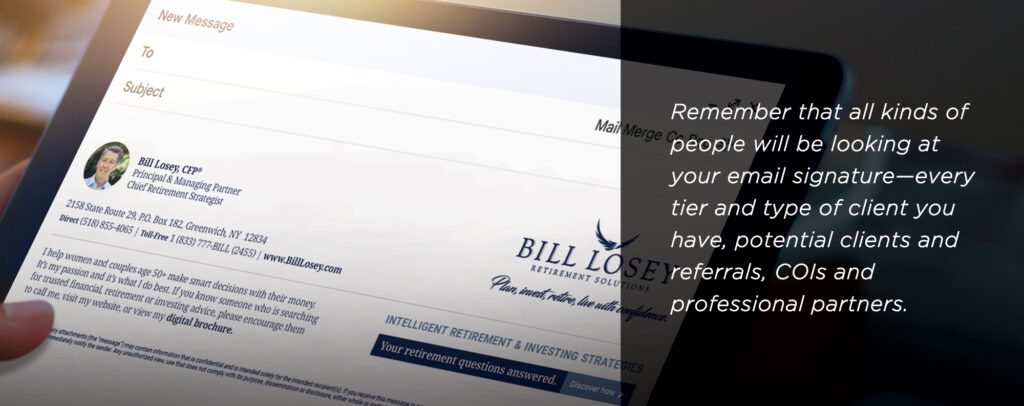What Your Email Signature Should Include
As small as it is, it’s one of the most visible pieces of your brand. You might as well use it as an opportunity to serve your growth objectives.
If you’re re-thinking your current email signature, make sure you have all of the essentials listed below. If you believe it could be doing more for you, then consider adding two or three of the non-essentials as well.
Essentials
Like a business card, your email signature should include (clearly and at the very top) all the information a person would need in order to contact you:
- Name, title and any designations
- Phone number (direct and main office)
- Mailing address
- Website
- Email address (this may seem redundant, but it doesn’t hurt to include and it can be handy if someone decides to screenshot and share your email signature)

Non-Essentials
Remember that all kinds of people will be looking at your email signature—every tier and type of client you have, potential clients and referrals, COIs and professional partners. That means nothing in your signature should be dated or market-specific.
To prevent the layout from getting too busy, try to stick to two or three of these non-essential items.
- Headshot: This would appear up above or beside your name and contact information. While it’s not quite an essential item, it reinforces the personal connection you have with clients and partners.
- Recognition: An eye-catching differentiator like a Forbes Best-in-State badge can be an excellent way to emphasize your credibility and expertise.
- Quote: Some advisors like to include a personal quote that’s representative of their worldview or personality, or a line that addresses their willingness to accept referrals. Neither is essential, but both can add value and utility to your email signature.
- Video link: If you have an evergreen, core-brand video, this is a good place to share it.
- Digital brochure link: Similarly, a digital brochure link won’t take up much space, but it gives interested parties an avenue to learn more about what you do.
Of the above items, hyperlink whatever you can in order to reduce clutter and simplify the process for users.
You’ll also want to consider the format of email signature that makes the most sense for you. HTML signatures can be very polished, but require simplicity. Text or image signatures can work well for some, but have limitations. Reach out to us if you’re looking for additional guidance.
